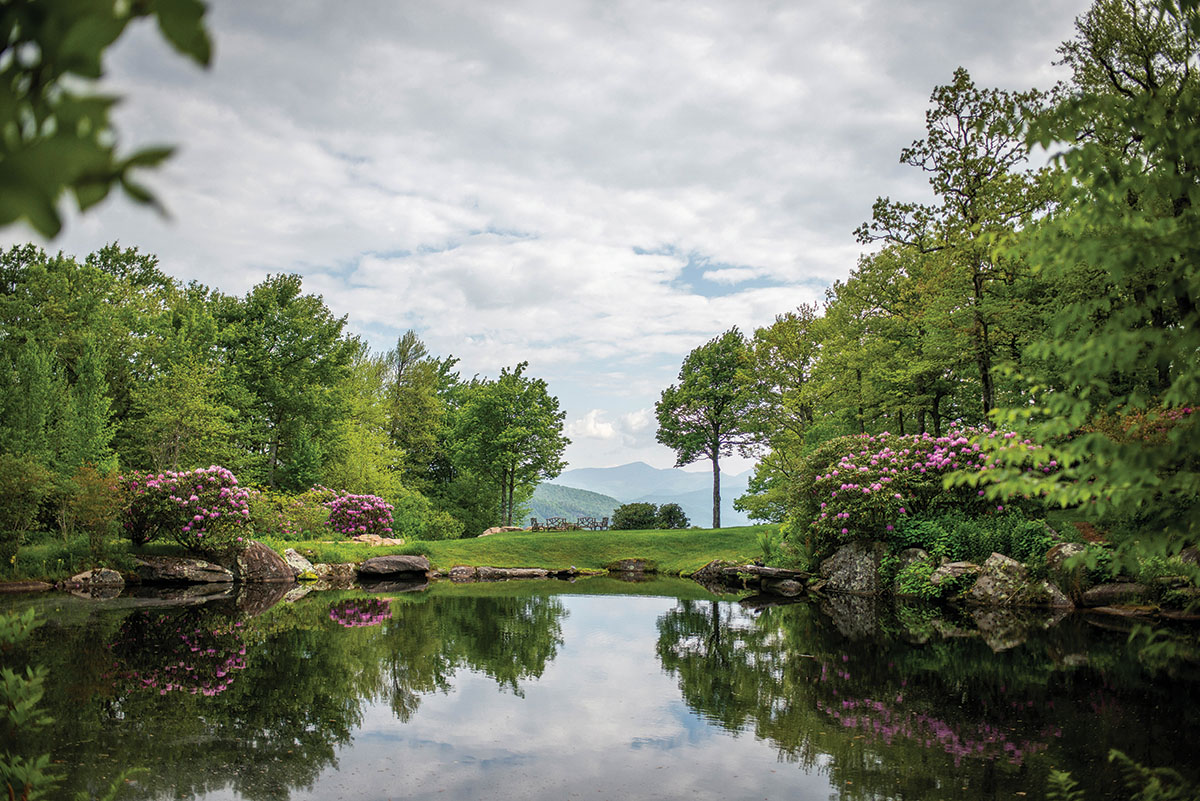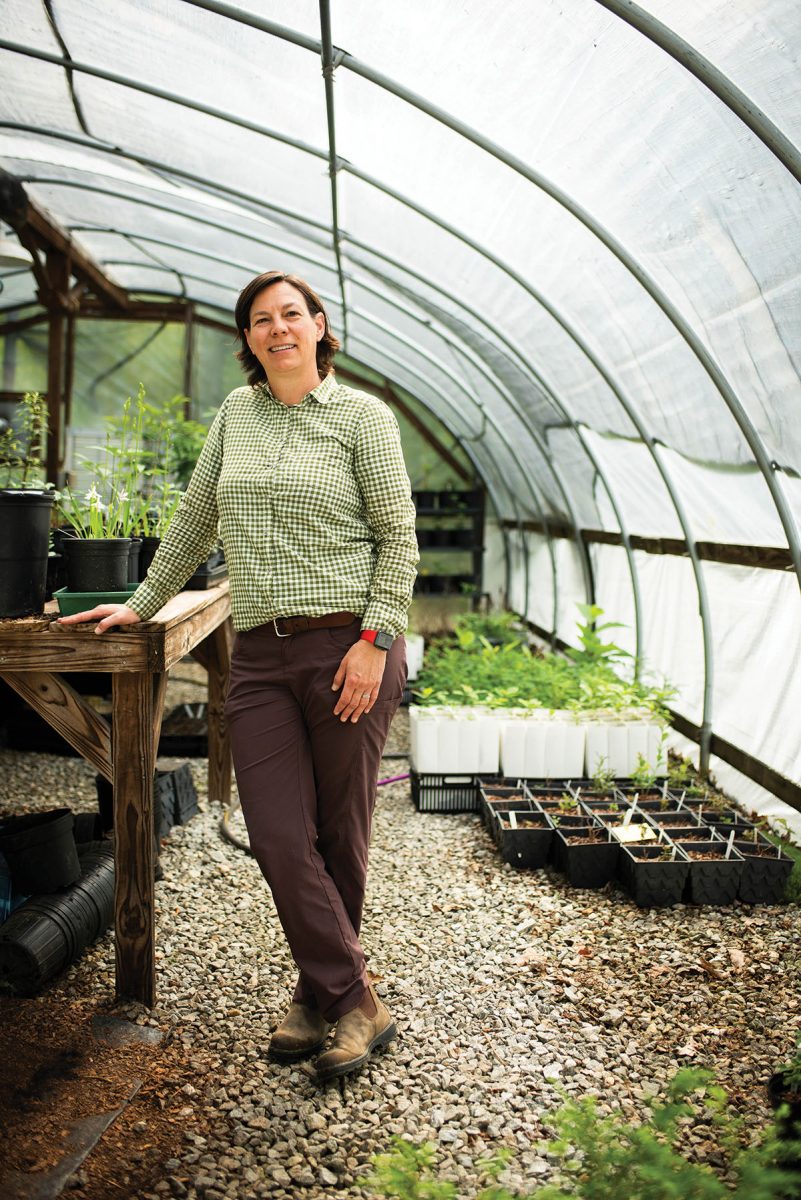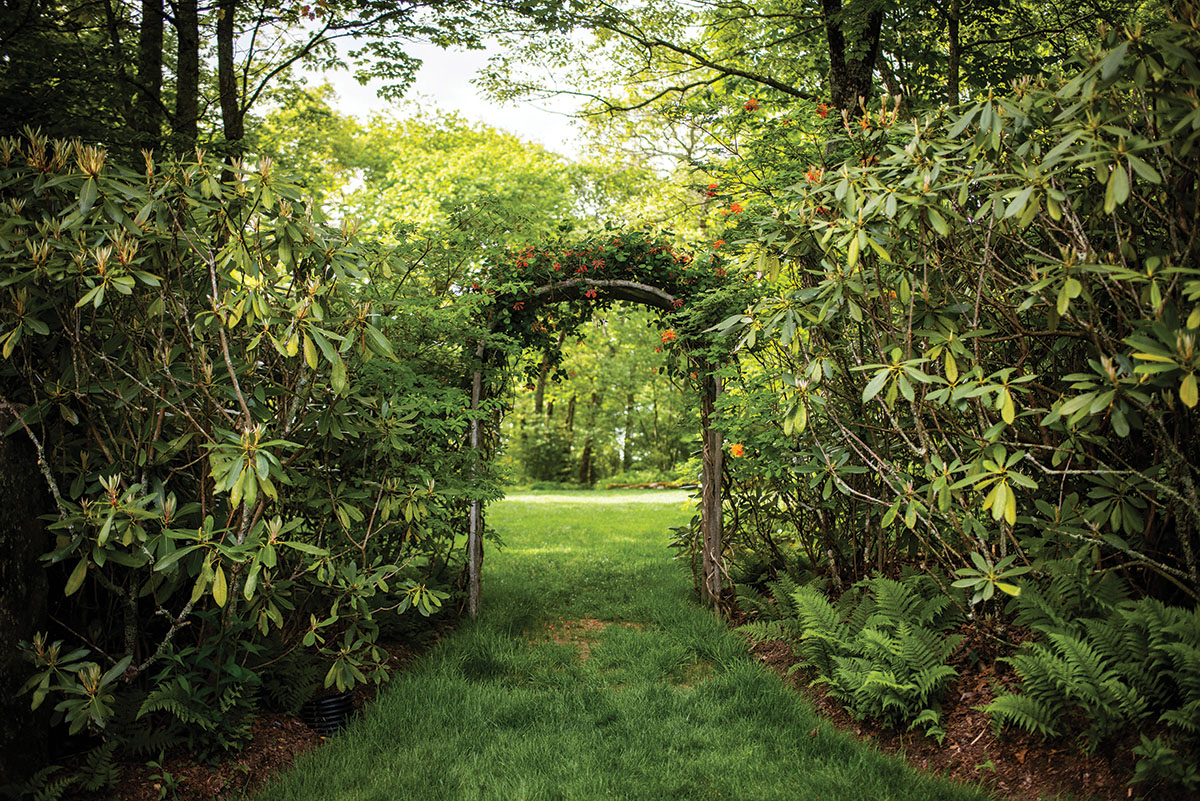
Photo by Karin Strickland
Nature Deficit Disorder is not yet recognized in medical textbooks or psychology journals, but to Betty and Robert Balentine, it was a very real malady affecting their children, raised in Atlanta, Georgia. When the two lifelong outdoor enthusiasts and passionate gardeners bought a lot atop Toxaway Mountain 20 years ago to build a second home, they cultivated the cure right across the road.
Southern Highlands Reserve — a native-plant arboretum and research center — is hardly a backyard garden or neighborhood park. When the Balentines learned that many of the adjacent lots were slated for development, they began to purchase them, ultimately protecting for perpetuity 120 acres through a conservation easement with the North American Land Trust.
With that settled, the work began on fulfilling their ambitious vision statement — to acquire every single plant that is in the Great Smoky Mountains National Park — and their mission purpose: education, restoration, and propagation.

Photo by Karin Strickland
Landscape architect W. Gary Smith worked with the Balentines to design the 22-acre Core Park, which contains distinct garden rooms that showcase the native plants of the Southern Appalachian region, creating immersive environments and serene havens. SHR Executive Director Kelly Holdbrooks — who, with Director of Horticulture Eric Kimbrel, has been employed nearly a decade there — counts more than a dozen garden rooms intentionally placed about the lush, wooded land: There’s the Azalea Walk, the Yellowwood Grove, the Woodland Glade, and the Waterfall and Cliff Communities.
Holdbrooks walks the property almost daily with her Double Doodle Bizzie and tends to gravitate to the Wildflower Labyrinth, the Vaseyi Pond, and the Viewsite, which delivers a breathtaking panorama of 16 distinct peaks of the Blue Ridge Mountains and Lake Toxaway below, from a heady elevation of 4,500 feet. The Chestnut Lodge houses offices, a conference room, library, media room, working classroom, small apartment for guest speakers, and 22 pieces of furniture built on site; constructed from stone brought up the mountain, it was completed in six years.

Photo by Karin Strickland
Southern Highlands Reserve began collecting native-species plants in 2003 and now have around 400. Holdbrooks estimates there are two to three thousand in the Great Smoky Mountains National Park: It’s a daunting goal to obtain them all, but a thrilling process.
“We’re just little plant nerds,” she says with a laugh. “You can’t just go to a garden center and pick these plants up. It’s all about cultivating relationships and meeting someone who knows someone. We just met a gentleman who is a sarracenia grower with carnivorous plants and bog plants.”
As each plant arrives at the Reserve, it becomes part of the accession record, which was paper only for the Reserve’s first several years. Each plant received a page, headed by the Latin botanical name and the common name; a number; and basic information such as where it came from, the cost, size, and condition. Endemic plants — those already on the property — also received their own page.

In 2017, a grant from the Stanley Smith Horticultural Trust was used to create a digital plant database. In addition to all the plants that have arrived since then, almost all the old records have been entered, as well. Still, Holdbrooks says, staff also continues to make simultaneous paper records, scanning and attaching them as digital files.
The SHR’s biggest outreach endeavor in the public domain is the Red Spruce Project, which works with several federal and state conservancy and wildlife organizations to put the tree back on public lands. (The spruce-fir ecosystem is the second most endangered ecosystem in the U.S. after the Everglades.)
It’s a cone-to-tree operation: “We just got our hands on some Virginia cones,” Holdbrooks says excitedly. “We will clean them, extract the seeds, and germinate them. In three to five years, the young trees will go back to Virginia.” Since 2013, nearly 5,000 red spruce have been planted on public land, and thousands more are being readied in greenhouses on site.
Because the Southern Highlands Reserve is a private property, it’s not readily accessible like public arboretums. Visitor Days — the first Tuesdays of the month, April through October — are sold out through 2021, a surge Holdbrooks believes was post-pandemic driven. (Private tours for groups such as garden clubs and plant societies are still available via advance reservation.) Every tour is guided, and Holdbrooks is currently training more volunteer docents in hopes of adding additional slots.
But The Reserve’s most devoted volunteers are its founders, whose primary residence remains in Atlanta but whose service is always nearby. “The Balentines are up here, hands in the ground, all the time,” Holdbrooks says. “They spend hours weeding the gardens. On Mondays we come in and say, ‘Let’s go find Betty and Robert’s piles.’ This place is their love and their legacy.”
She notes that the Balentines’ grown children, the impetus for the whole project, are thriving. “Now the next generation of six grandchildren are up here exploring … we implemented some capital improvements over the winter in nature play — my research and focus — and the kids are loving them.”
Southern Highlands Reserve, Lake Toxaway. To inquire about reservations and for more information, see southernhighlandsreserve.org.
